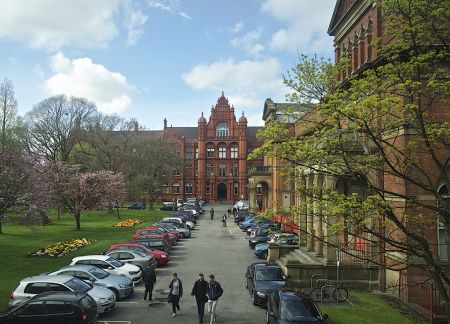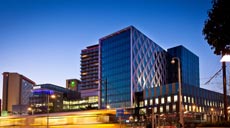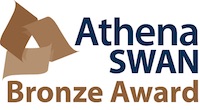What's on at Manchester Science Festival 2015?

What's on at Manchester Science Festival 2015?
Thursday 16 July 2015
Human-generated electricity installation among highlights of 10-day showcase of discovery
Could kinetic energy produced when we walk, run or jump be captured as a future clean energy source?
This is a question posed by an award-winning exhibit at the 2015 Manchester Science Festival, proudly produced by the Museum of Science and Industry, supported by Siemens and the University of Salford.
Manchester Science Festival returns to the city for its 9th impressive year from 22 October to 1 November with details published today of a packed programme of events at 50 venues across the city to celebrate the wonders and delights of the science that lives all around us.
Kinetic Flux - the winning entry of the first ever joint £5,000 competition created in partnership with Electricity North West and the University of Salford - launched as a platform to create an original piece of work around the theme of electricity. This brand new collaborative installation has been devised by digital film maker Paul Miller and glass artist Griet Beyaert.
Kinetic Flux is concerned with human kinetic energy recapture and the potential this developing technology has for future power needs. A closed network of glass sculptures will hang in the air, through which electric light energy will pulse and flow gently, until the viewer steps closer and takes control: all movements will be monitored by an infra-red camera, so that speed, distance and direction will influence the current. As a result, visitors will witness the effects of the kinetic movements immediately, showing the relationship between human activity and energy output.
Other highlights include:
• an adult only ball pool to inspire creativity through play – which sold out in minutes during its inaugural run in London last December
• a two day coding competition for juniors, a run of cinema screenings staged in the stunning historic surrounds of Manchester Cathedral
• the premiere of acclaimed artist Tania Kovats’ Gaia-inspired new work, Evaporation, exploring the global, interconnected bodies of water.
The Museum of Science & Industry is also proud to present the North West premiere of Cravings, a family friendly exhibition exploring how food affects the body, brain and eating habits.
Based on the work of Chester Zoo’s conservation team, scientists and partners in Sumatra, Borneo and the UK, come together too at this year’s Festival for the first time in ‘Who's Killing the Orangutans’ - an evening of dramatic entertainment, food, science and topical debate at The Lowry. Audiences will interact with some of the key characters in the Palm Oil debate as they argue over who is responsible for the decline of the orangutans and other rainforest species, until ultimately the visitors decides.
A live broadcast of the hit Radio 4 science programme, The Infinite Monkey Cage starring Professor Brian Cox and much loved stand-up Robin Ince, will also make its broadcasting debut at the Museum of Science and Industry in front of a live audience on the Festival’s opening night on 22 October.
The 2015 Manchester Science Festival is part of the European City of Science celebrations which kick start with this year’s Festival and continue throughout 2016. Manchester is the first city in the UK to receive this title and will host the EuroScience Open Forum (ESOF) as part of this. ESOF is Europe’s leading science conference taking place every two years and will feature a week-long celebration of science with 100’s of events taking place across Manchester, starting from 23 July 2016.
Full details of this year’s Manchester Science Festival – featuring conversations, workshops, theatre, music, comedy, film, experiments, family events, adult only Lates and exhibitions will be available online from September, when bookings will open. http://www.manchestersciencefestival.com/
PR: Rachel Furst, Senior Press Officer at the Museum of Science and Industry: 0161 606 0176 or r.furst@mosi.org.uk
Ends
NOTES TO EDITORS ABOUT KINETIC FLUX:
• Created to stimulate public engagement with the science and technologies of electricity this collaboration between the Manchester Science Festival, Electricity North West and the University of Salford, celebrates the fusion of art and science, and aims to spark debate around the role electricity plays in our daily lives.
• Dr. Marieke Navin, Manchester Science Festival Director who also runs the museum’s year-round contemporary science programme remarks: “We are thrilled to have awarded this inaugural prize to Griet and Paul for their inspired and collaborative entry. We were keen to find something completely different and visually arresting which can fully ignite interest in science through creative means highlighting how closely linked science and art really are.”
• Jonathan Collins, Corporate Social Responsibility Manager for Electricity North West, says: “We were really impressed with all the entries, but Kinetic Flux really stood out to us and we can’t wait to see the finished product. It’s easy to take electricity for granted but as the North West’s network operator we work hard to keep the lights on across the region, so it’s going to be exciting to see people enjoy and watch this creative piece based on electricity and the role it plays in our daily lives.”
• Professor Andy Miah, from the University of Salford adds: ““This is a fantastic new commission celebrating everything the festival partners seek to champion – innovation, creativity, and a tendency to do things differently. It’s great to have this kind of cross-sector collaboration ahead of Manchester’s year as European City of Science, and for it to give rise to something that will bring world leading science, art, and industry closer to the public. This new art work brings into focus how the landscape of energy creation and distribution is changing and will inspire people to think about what role they can play in the future of electricity”
• Paul Miller works with traditional and digital media, fusing projections, video and animation to make short films, music videos and large-scale sound and vision installations and events, including live, multi-channel video mixing. Griet Beyaert is an artist working predominantly in glass. Her work is informed by her interest in the human body and the transformation of spaces when considering the human body a space in a constant state of change. This is their second joint commission, the first being “the glass cyphers” an installation of self-contained, floating light spaces, premiering at Left Bank, Leeds October 2015.
NOTES TO EDITORS ABOUT MANCHESTER SCIENCE FESTIVAL
• Over 98,000 visitors enjoyed 135 unique events, exhibitions, and installations created by 62 organisations across public, cultural, community and academic sectors in the 2014 Manchester Science Festival.
• *Evaporation by Tania Kovats is the second in the annual Cape Farewell ‘Lovelock Art Commission’. Inspired by the findings, writings and inventions of the famous scientist James Lovelock, Cape Farewell commissions artists who pioneer the interaction between science, art and the climate challenge.
• Manchester Science Festival is supported by:
SIEMENS – headline Sponsor
University of Salford – lead Education Partner
Electricity North West Ltd
Waters Corporation
Manchester Science Parks
About the Museum of Science and Industry
The Museum of Science and Industry tells the story of where science met industry and the modern world began. Manchester was one of the first global, industrial cities, and its epic rise, decline and resurrection has been echoed in countless other cities around the world. From textiles to computers, the objects and documents held in the museum’s collection tell stories of everyday life over the last 200 years, from light bulbs to locomotives. The museum’s mission is to inspire all its visitors, including future scientists and inventors, with the story of how ideas can change the world, from the industrial revolution to today and beyond.
The Museum of Science and Industry is part of the Science Museum Group, a family of museums which also includes the Science Museum in London; the National Railway Museum in York and Shildon; and the National Media Museum in Bradford. The Science Museum Group is devoted to the history and contemporary practice of science, medicine, technology, industry and media. With five million visitors each year and an unrivalled collection, it is the most significant group of museums of science and innovation worldwide.
About Siemens
Siemens aims to inspire millions of children through the promotion of science and engineering. This hands-on new initiative will allow teachers, students and parents to access information explicitly designed to encourage young people to engage with engineering. The programme is an extension to Siemens’ current investment in the promotion of Science, Technology, Engineering and Mathematics (STEM) related subjects. It also incorporates sponsorship and presence at four major science festivals throughout the UK.
Siemens was established in the United Kingdom more than 170 years ago and employs 14,000 people in the UK. As the world's largest engineering company, Siemens is No. 1 in offshore wind turbine construction, a leading supplier of combined cycle turbines for power generation, a major provider of power transmission solutions and a pioneer in infrastructure solutions as well as automation, drive and software solutions for industry. The company is also a leading provider of medical imaging equipment – such as computed tomography and magnetic resonance imaging systems – and a leader in laboratory diagnostics as well as clinical IT. For more information, visit www.siemens.co.uk
The University of Salford
The University is an ambitious institution with 20,000 students contributing enormously to the local economy. Leading in areas such as science and technology, health, energy, media and the built environment, innovation is at the heart of the University. Salford is home to world-class facilities such as the Salford Energy House - Europe’s first and only research facility of its kind - a typical Salford 1919 terraced house reconstructed in a fully environmentally controllable chamber, in which leading researchers work collaboratively with industry to develop and test new technologies and energy efficiency solutions. The only University with a campus at MediaCityUK, Salford is proud to call the BBC and ITV its neighbours. The University’s partnership with organisations such as BT, ITV and Adobe places students at the front of the queue for careers in the media and digital sectors. http://www.salford.ac.uk/
European City of Science
In 2016 the title of European City of Science comes to the UK for the first time. Manchester the city of Dalton, Rutherford and Turing will host a yearlong celebration of science and innovation. The first announcements about the programme of public events will be made during Manchester Science Festival 2015.
The highlight of the European City of Science is the EuroScience Open Forum (ESOF) 2016, Europe’s largest multi-disciplinary science meeting (23 – 27 July). The event brings together over 4,500 leading thinkers, innovators, policy makers, journalists and educators from more than 90 countries, to participate in events which include:
• Seminars, talks and debates on the latest science and technology from leaders in the field – including Nobel laureates, influential policy makers and prominent scientists
• Science-to-business activities linking cutting edge research with industrial applications
• Careers events for those in the early stages of their profession
• Dedicated happenings for science communicators, journalists and bloggers
• An exhibition to showcase the very best of European research, innovation, business and technology.
Wrapped around ESOF will be a festival taking science to the streets of Manchester. With events for everyone of all ages, there will be 100’s of activities which will connect the public with pioneering scientists through workshops, performances and experiences celebrating the latest developments in science, technology and engineering.
For further information visit www.manchestersciencecity.com
Cape Farewell and the Lovelock Commission
Cape Farewell is an artist led organisation that works to create an urgent cultural response to climate change. Launched by David Buckland in 2001 with a series of groundbreaking artist and scientist-manned expeditions to the Arctic, Cape Farewell has become an international not-for-profit programme that has supported over 300 artists creating new work, exhibitions, events, performances, talks, books and films, amongst much else.
Our mission is to change the way people think about the climate challenge, and to widely communicate, educate and inspire action on the need for urgent, and achievable, change. Cape Farewell engages with our greatest creative, scientific and visionary minds to work together with clean technology entrepreneurs, sociologists and universities to achieve the non-carbon society we must all aspire to.
In October 2015 we launch the second year of the Lovelock Art Commission with the Manchester Museum of Science and Industry. Each year the programme invites artists to respond to James Lovelock’s Gaia principle of the planet as an interconnected super-organism. It is a major yearly commission currently supported by the Arts Council.
For further information visit: www.capefarewell.com









